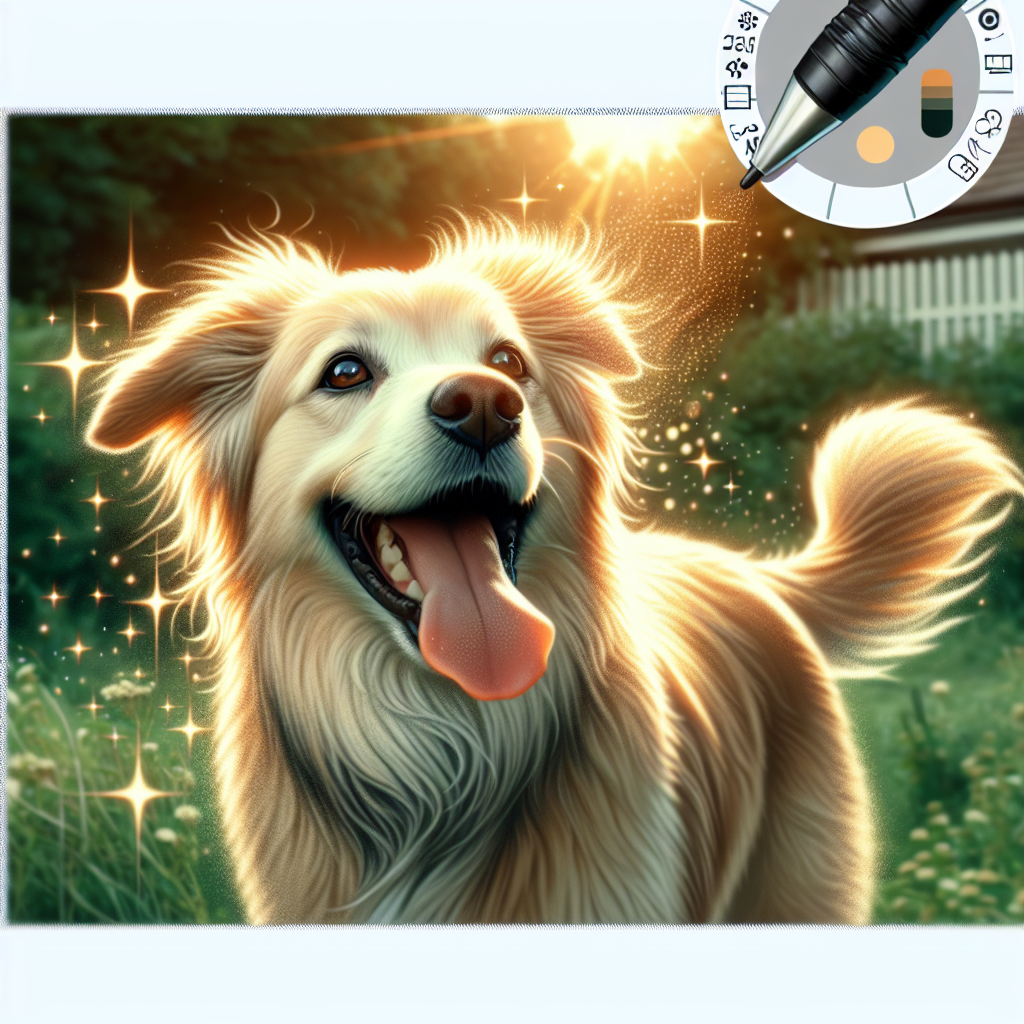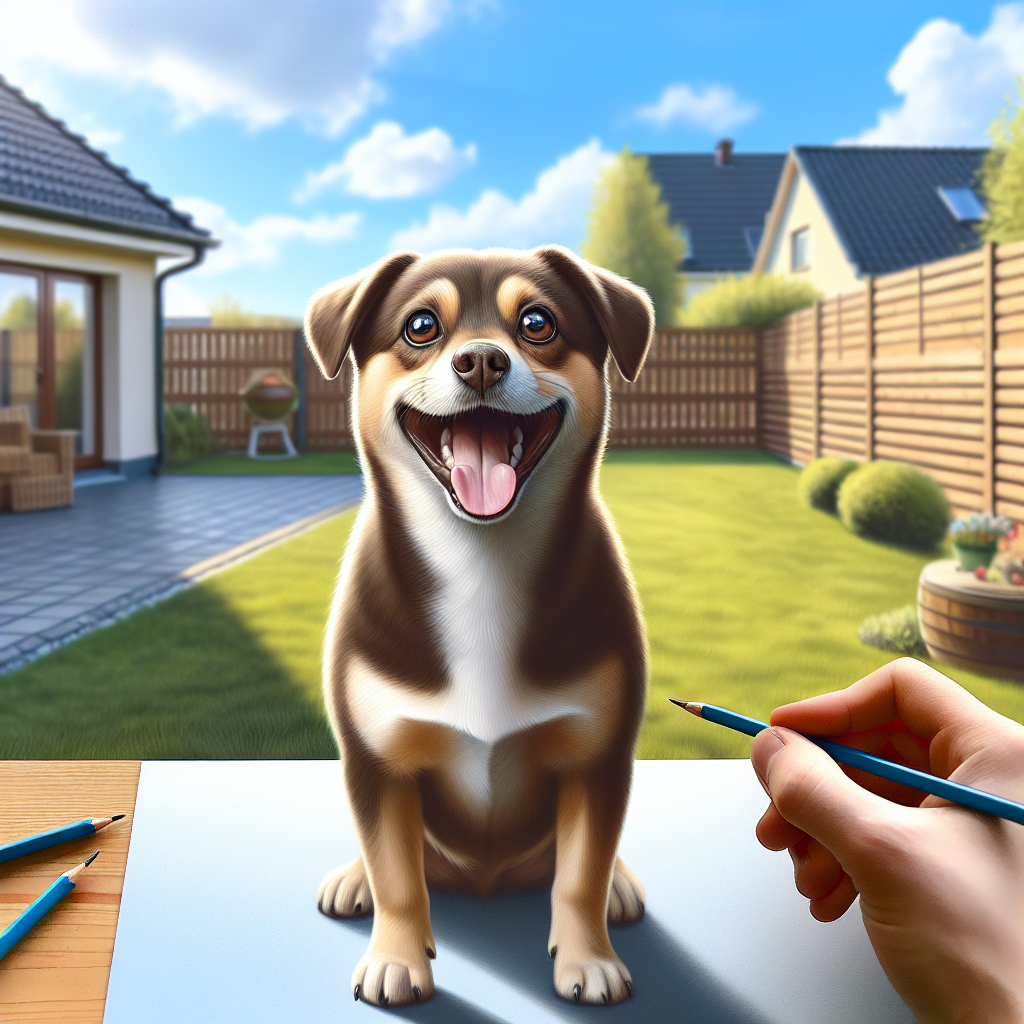Introduction: The Flea Dilemma

Ah, fleas. Those pesky little jumpers that can make even the calmest among us squirm. If you’ve ever dealt with a flea infestation, you know the struggle is real. It’s like these tiny creatures have a personal vendetta against your peace of mind—and your pets. You wake up one morning, and suddenly, your house feels like it’s been invaded by a relentless army of miniature vampires. So, what’s the best way to get rid of fleas in your house? I’m here to spill the beans on this age-old question.
Now, I’ve been around the block a few times in the pet industry, and if there’s one thing I’ve learned, it’s that flea infestation solutions aren’t just about a quick fix. It’s like peeling an onion—layer by layer, with a few tears along the way. But don’t worry, you’re not alone in this. Together, let’s dive into this itchy dilemma and find some peace for you and your furry friends.
Understanding the Flea Life Cycle
Let’s start with the basics. Understanding the flea life cycle is crucial before you even think about battling these critters. You might be thinking, “Why should I care about their life cycle?” Well, knowing your enemy is half the battle won. Fleas go through four life cycle stages—egg, larva, pupa, and adult. It’s a bit like a twisted version of the butterfly cycle, minus the pretty wings and all the more annoying.
It’s the adult fleas that hop around like they own the place, but the eggs and larvae are the stealthy ones. They’re the silent troublemakers, hiding in the nooks and crannies of your home, waiting for the right moment to strike. And there’s the kicker: a single flea can lay hundreds of eggs in a matter of days. It’s like a flea factory on steroids. So, when tackling how to get rid of fleas in the house, you’ve got to play the long game.
Identifying Flea Hotspots in Your Home
Alright, let’s talk about the battlefield—your home. Flea hotspots in the house are sneaky little buggers. They love warm, moist places, which means they have a thing for your pet’s bedding, carpets, and even the cracks in your wooden floor. It’s like they have a radar for cozy corners. I once had a friend who found them living it up in her sofa cushions, throwing what I can only imagine were flea parties every night.
Spotting these flea hotspots in your house might require a bit of detective work. Think of it as a treasure hunt, only the treasure is… well, less treasure and more of a nightmare. Check anywhere your pets spend a lot of time. Trust me, getting rid of fleas in your house becomes a whole lot easier when you know where they’re hanging out.
The Importance of Pet Treatment
Here’s where it gets personal. Your pets are the main attraction for fleas, and treating them is step one in stopping the endless flea carnival. Ignoring pet flea treatments is like leaving the door open for uninvited guests. There are plenty of options out there—shampoos, collars, pills, you name it. But remember, it’s not about slapping on a quick fix. It’s about finding something that works for your furry companion.
I remember this one time, I tried a new flea treatment on my dog, Max. Poor guy looked at me like I’d betrayed him. But a few days later, he was prancing around, flea-free, like nothing ever happened. It’s a small price to pay for their comfort. Plus, by treating your pets, you’re cutting off the flea supply chain at its source. The best way to get rid of fleas in your house often starts with these little guys.
First Steps to Take: Vacuuming and Cleaning
Let’s roll up those sleeves—time to get down and dirty. Vacuuming to remove fleas isn’t just a chore; it’s an art form. Think of your vacuum as a mighty flea-sucking machine, ready to wage war on every carpet, rug, and crevice. But don’t stop there. Cleaning pet bedding is just as crucial. Those tiny flea eggs love settling into your pet’s favorite napping spots.
Vacuum like you mean it. Go over each area like you’re trying to erase a bad memory. And don’t forget to empty the vacuum bag or canister—no sense in giving those fleas a free ride back into your home. As for cleaning pet bedding, make it a regular thing. Hot water and soap are your best friends in this battle. Let’s face it, when it comes to how to get rid of fleas in the house, a bit of elbow grease can go a long way.
So, there you have it. A no-nonsense guide to dealing with fleas, without the fluff. It’s a journey, I’ll admit, but one that ends with a flea-free home and a happy pet. Thanks for sticking with me through this adventure. Here’s to taking back your home, one flea at a time. Best of luck, and may your efforts be rewarded with peace—and no more itch.
Natural Remedies: Mother Nature’s Flea Fighters
Alright, let’s talk about those natural flea remedies for home. Imagine this: a summer afternoon, the sun’s blazing, and you’re armed with vinegar and dreams. That’s right—vinegar. Your grandma wasn’t kidding when she said it was the cure for everything under the sun. A little apple cider vinegar in a spray bottle can work wonders on those tiny invaders. Give your pet a spritz, and watch the fleas make a hasty retreat. It’s like a mini exorcism, but for fleas.
And let’s not forget our old pal, diatomaceous earth. It’s the quiet hero of the natural world—sprinkle it on carpets, let it sit, and the fleas don’t stand a chance. They’ve got exoskeletons, but you’ve got the magic dust.
But here’s the thing—natural remedies are a marathon, not a sprint. They’re slow and steady. You might find yourself wondering if it’s worth it, but stick with it. If you’ve got the patience of a saint and the determination of a marathon runner, these remedies will work their magic.
Chemical Solutions: When Nature Needs a Little Help
Now, if patience isn’t your strong suit, and you want those fleas gone yesterday, it’s time to break out the big guns—chemical flea treatments. They’re not for everyone, but sometimes you need to call in the cavalry.
Let’s be honest—when those critters just keep coming back, no matter how much vinegar you use, it’s time to bring in the professionals. Chemical flea treatments effectiveness is no joke. You’ve got sprays, powders, and those little drops you put on your pet’s neck. Yeah, they can be a bit harsh. But when the going gets tough, sometimes you need a little help from science.
Not to sound like a broken record, but read the labels. Those words are there for a reason. Safety first, folks. You don’t want a flea-free home at the cost of your pet’s health. With these treatments, it’s all about balance—finding that sweet spot between effective and safe.
Vacuuming: Your Secret Weapon Against Fleas
Ah, vacuuming. Who knew a household chore could turn into your best line of defense? It’s not just about clean floors anymore; it’s about survival. The best vacuum for flea removal is one that sucks up every last speck of dirt and flea.
It’s like this—every day, you vacuum, and every day, you’re winning a little battle in the war against fleas. Get into those nooks and crannies, the dark corners where the fleas hide. Leave no cushion unturned, no rug untouched. It’s a daily ritual, a dance with destiny.
And there’s something satisfying about seeing that dust cup fill up, knowing you’re trapping those little suckers. It’s the small victories, right? So, vacuum like your life depends on it—because your sanity might.
Washing: Cleanliness is Closer to Godliness
Now, don’t underestimate the power of a good wash. Washing bedding to remove fleas is like a baptism for your sheets. Toss those blankets, pillowcases, and pet beds into the hottest wash they can handle. The hotter, the better—fleas can’t stand the heat.
It’s time-consuming, sure. You might feel like you’re running a laundry service for your linens. But each wash cycle is a step closer to a flea-free existence. It’s therapeutic, almost—a cleansing of sorts. And once you’re done, the smell of fresh laundry is the scent of victory.
But remember, it’s not just a one-time thing. Make it a habit. Keep the washing machine warm and ready, and let it be your ally in this ongoing battle.
Prevention: Keep Those Fleas Far, Far Away
Finally, let’s talk prevention. Because once you’ve done the hard work, you don’t want to invite those fleas back for round two. Flea prevention tips for pet owners are your new best friend. Keep your pets groomed, check them regularly, and don’t skip those preventive treatments.
Maintaining a flea-free home is about vigilance. Once you’ve figured out how to prevent fleas in the house, stick to it like glue. It’s like having a fortress—strong walls, no cracks. This is your domain, and you’re the guard on duty.
And let’s face it, nobody wants to go through this mess again. So, keep your guard up, stay alert, and let no flea pass unnoticed.
Thanks for sticking around, folks. This journey’s been a wild ride, but you’ve got this. With a little bit of grit and determination, you can say goodbye to fleas for good. Happy flea-busting!
Dealing with Flea Infestations on a Shoestring Budget
Alright, folks, gather ’round. Let’s talk about battling those pesky fleas without burning a hole in your pocket. Think of it like making a meal out of what’s left in the fridge—creativity is key. Affordable flea removal methods are your best friend here.
First, hit the local store. You’re looking for flea sprays or powders that won’t make your wallet cry. A little research goes a long way, so skim through reviews or ask around. Some swear by diatomaceous earth—sounds fancy, but it’s just crushed fossils that dehydrate the critters. Cheap and cheerful.
Next, DIY flea remedies. You don’t have to be a chemist. A simple mix of water and vinegar can be your secret weapon. Spray it everywhere those fleas might be lurking. And hey, if you’ve got an old vacuum cleaner, put it to work. Vacuum like you’ve never vacuumed before. It’s practically free and gets rid of flea eggs. Just remember to empty the bag outside. No point in inviting them back, right?
Natural Remedies: When Mother Nature Lends a Hand
Let’s give Mother Nature a round of applause. She’s got your back with natural flea control options. These little buggers hate certain smells. Lavender, for instance. Who knew it was more than just a scent for soap? Grab some lavender oil, mix it with water, and spritz away.
And then there’s rosemary. Not just for roast chicken. Boil it in water, let it cool, and turn it into a rinse for your pets. It’s like giving them a spa day without the spa price.
But, heads up—natural doesn’t mean foolproof. You might need to play around with different remedies to see what sticks. Be patient, give it a shot, and keep the faith that Mother Nature will lend a hand.
What Not to Do: Common Flea Removal Mistakes
Now, let’s have a heart-to-heart about mistakes to avoid in flea treatment. We’ve all been there—trying to cut corners only to find ourselves deeper in the mess. First off, don’t skip reading the labels. I know, it’s tempting to just dive in, but those instructions are there for a reason.
And don’t think that using more product will work better. Overdoing it can harm your pets or your family. Trust me, moderation is key.
Another common blunder—forgetting about the source. Your furry friend needs to be treated too. Otherwise, it’s like trying to empty a sinking ship with a spoon. So, keep your pet in the loop with regular treatment.
Lastly, don’t just treat the obvious spots. Fleas are sneaky—they hide in nooks and crannies. So, when you’re cleaning, be thorough. It’s a marathon, not a sprint.
Following Up: Keeping the Little Buggers Away
So, you’ve won the battle, but the war? Not over yet. Post-treatment flea prevention is essential. Fleas are like that annoying song that gets stuck in your head—they come back if you’re not careful.
Get into a routine. Regular vacuuming isn’t just for when company comes over. It helps keep those flea eggs and larvae from setting up shop.
Wash your pet’s bedding often. You wouldn’t sleep on dirty sheets, would you? Same goes for them. Hot water does wonders.
And don’t forget about flea collars or monthly treatments for your pets. It’s like a security system—better safe than sorry. Preventing flea infestations is all about being one step ahead.
When to Call in the Pros: Knowing When You’re Out of Your Depth
Sometimes, you’ve done all you can, and those fleas are still partying like it’s 1999. That’s when you know—time to call in the professionals. It’s okay to admit defeat. Professional flea extermination services are there for a reason.
These folks have seen it all. They’ve got the tools and the know-how to handle even the nastiest infestations. Sure, it might cost a bit more, but sometimes peace of mind is worth it.
You don’t have to be a hero. If you’re feeling overwhelmed, reach out. Let the pros take the reins while you kick back and relax.
So there you have it, friends. The best way to get rid of fleas in your house is a mix of elbow grease, patience, and knowing when to call for reinforcements. Thanks for sticking around. You’ve got this. Keep at it, and those fleas won’t know what hit them. Happy hunting!
Quick Takeaways:
Alright, folks, if you’ve ever dealt with a flea invasion, you know it’s no walk in the park. Those little jumpers can turn your home into a battleground. So, what’s the best way to get rid of fleas in your house? Start with understanding their life cycle—those eggs, larvae, pupae, and adults aren’t going to get rid of themselves. Fleas aren’t just chilling on your pet; they’re in the carpet, the couch, and anywhere your pet hangs out—flea hotspots, if you will.
Get a grip on pet flea treatments. You gotta make sure your furry friend is on a regular regimen. Then there’s vacuuming. Trust me, it’s not just for spring cleaning. Vacuuming to remove fleas is a must-do, and don’t forget the pet bedding—cleaning it is like hitting the reset button.
Natural flea remedies for home can be tempting. Vinegar, herbs—sure, give them a whirl. But if the fleas aren’t getting the hint, chemical flea treatments might have to step in. They pack a punch but use them wisely. Getting the best vacuum for flea removal can make your life easier too.
Once the dust settles—or rather, the fleas—focus on prevention. Flea prevention tips for pet owners are crucial. Seal up any entry points, keep the yard tidy, and maintain a flea-free home. After all, once you’ve figured out how to get rid of fleas in the house, you’ll want to keep it that way.
FAQs:
1.
What’s the best way to get rid of fleas in your house?
Dive straight into the heart of the problem. Begin with a thorough cleaning. Vacuum daily, focusing on carpets and furniture—those are flea hotspots in the house. Don’t skip cleaning pet bedding. Use a mix of natural flea remedies for home and chemical flea treatments if needed. Treat your pets regularly. Consistency is key.
2.
How can I prevent a flea infestation in the future?
Prevention is your best friend. Regularly treat your pets with vet-recommended treatments. Keep your yard tidy—flea prevention tips for pet owners often start outside. Seal up entry points and vacuum regularly. And hey, don’t forget to wash your pet’s bedding often.
3.
Do natural flea remedies for home really work?
They can, to some extent. Vinegar and certain herbs can help repel fleas, but they might not eliminate an infestation. They’re best used as part of a broader strategy. If you’re knee-deep in fleas, you might need to call in chemical flea treatments for effectiveness.
4.
How important is vacuuming in controlling fleas?
Vacuuming to remove fleas is huge. Fleas, eggs, and larvae can hide in carpets and upholstery. Vacuuming regularly disrupts their life cycle. Make sure your vacuum has strong suction—investing in the best vacuum for flea removal is worth it.
5.
Should I hire professional flea extermination services?
If you’re feeling overwhelmed, bringing in the pros could be a game-changer. They know how to get rid of fleas in the house with precision. It might cost a bit, but it can save you a lot of time and headache. Sometimes, letting the experts handle it is the best route.
Conclusion:
So, what’s the best way to get rid of fleas in your house? It’s all about strategy. You’ve got to hit them from all angles: clean, treat, vacuum, and repeat. Don’t just focus on your pet; focus on the entire house. It’s the only way to break the flea life cycle stages. And remember, once you’ve got a handle on it, prevention is your new best friend.
The war on fleas is a bit of a slog, but with persistence, you’ll get there. Stay vigilant, keep up with pet flea treatments, and don’t let your guard down. Those little buggers are relentless. But hey, so are you. Thanks for sticking with me through this journey. Now go out there and reclaim your flea-free home. You got this!
References:
1. [Frontline – How to get rid of fleas in the house – fast!](https://uk.frontline.com/pet-advice/seen-multiple-fleas-house)
2. [EPA – Controlling Fleas and Ticks Around Your Home](https://www.epa.gov/pets/controlling-fleas-and-ticks-around-your-home)
3. [RSPCA – Flea treatments: prevent and get rid of fleas](https://www.rspca.org.uk/adviceandwelfare/pets/general/fleas)
4. [Healthline – How to Get Rid of Fleas](https://www.healthline.com/health/healthy-home-guide/how-to-get-rid-of-fleas)
5. [PetMD – Flea Infestation: How to Treat and Prevent Them](https://www.petmd.com/general-health/flea-infestation)
Our solution eradicates fleas on contact without harmful chemicals, ensuring a safe environment for your pets and family. Easy to use and highly effective, SayByeBugs helps you maintain a flea-free home. Learn more and order today at SayByeBugs.com
Our solution eradicates fleas on contact without harmful chemicals, ensuring a safe environment for your pets and family. Easy to use and highly effective, SayByeBugs helps you maintain a flea-free home. Learn more and order today at SayByeBugs.com








